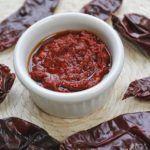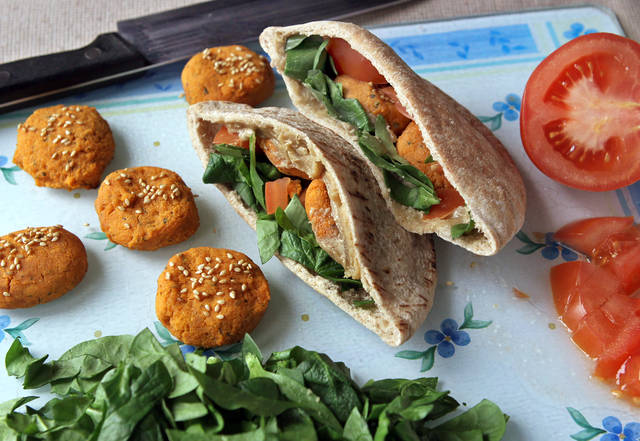I spent half of one youthful summer in the Middle East, working on an archaeological dig. Most weekends I went into the nearby town and gorged myself on the falafel sold by a local street vendor.
I learned two important lessons that summer. One was that the nitty-gritty part of archaeology absolutely bored me stiff and I needed to end any romantic dreams I had of choosing it for a career.
And the other was that falafel was absolutely amazing.
I’d had it before, but this was better. Maybe it was because I was in the part of the world where it was born. Maybe it was because the guy I was buying it from happened to make exceptionally good falafel.
Maybe it was because street food always tastes better on the street.
But for whatever reason, the falafel I got that summer remains for me the ideal version of the popular Middle Eastern treat.
Falafel
Yield: About 18 balls
1 cup dried chickpeas, also known as garbanzo beans, or 2 (151/2-ounce) cans
1/2 large onion, roughly chopped, about 1 cup
2 tablespoons finely chopped fresh parsley
3/4 teaspoon salt
4 cloves garlic
1 teaspoon ground cumin
1 teaspoon baking powder
4 to 6 tablespoons flour
Oil for frying
1. If using dried chickpeas, put in a large bowl and add enough cold water to cover by at least 2 inches. Let soak overnight, then drain. If using canned chickpeas, rinse and drain.
2. Place the drained, uncooked chickpeas and the onions in the bowl of a food processor. Add the parsley, salt, garlic and cumin. Process until blended, but not puréed.
3. Sprinkle in the baking powder and 4 tablespoons of the flour, and pulse. Add more flour, if necessary. You want to add enough flour so that the dough forms a small ball and no longer sticks to your hands. Turn out into a bowl and refrigerate, covered, for several hours.
4. Form the chickpea mixture into balls about the size of walnuts.
5. Heat 3 inches of oil to 375 degrees in a deep pot or wok and fry 1 ball to test. If it falls apart, add a little flour. Then fry about 6 balls at once for 3 to 4 minutes, or until golden brown (the temperature of the oil will drop). Drain on paper towels.
6. To serve in the traditional manner, stuff half a pita with the balls and add chopped tomatoes, diced sweet onion, diced green pepper, pickled turnips and a sauce made from tahini thinned with water. Or add pickled cucumber or sauerkraut, or such sauces as harissa or z’hug.
Harissa
Yield: 1 1/2 cups, about 16 servings
4 ounces dried hot red New Mexican chili peppers (about 18), stems removed
1/2 cup olive oil, divided
7 to 8 cloves garlic
1/2 teaspoon ground cumin
1/2 teaspoon ground coriander
1 teaspoon coarse salt, or to taste
1. Soak the peppers in warm water until soft; drain and squeeze out any excess water. Place in food processor with 1/4 cup of the oil, garlic, cumin, coriander and salt, and process until it forms a thick purée. Place in a jar, pour on the remaining olive oil, cover and refrigerate.
2. Let it sit for a few days before using for best results. Top with more olive oil after each use. This sauce also goes well with grilled meat.
Z’hug
Yield: 1 cup, about 10 servings
4 ounces fresh green serrano or jalapeño peppers, stems removed
1 whole head garlic, each clove peeled
1/2 cup fresh cilantro, rinsed and dried
1/2 cup fresh parsley, rinsed and dried
1/4 teaspoon whole black peppercorns, or 1/4 teaspoon black pepper
1/2 teaspoon ground cumin
2 green cardamom pods, peeled
3/4 teaspoon salt, or to taste
1/4 cup olive oil, plus additional to cover
1. Place peppers with the garlic, cilantro, parsley, peppercorns, cumin, cardamom and salt to taste in the bowl of a food processor. Chop until almost puréed, then add 1/4 cup oil and purée.
2. Remove to a glass jar and just cover with additional olive oil. The z’hug will keep for several months, covered in an airtight jar, in the refrigerator.









